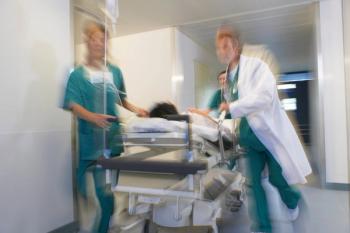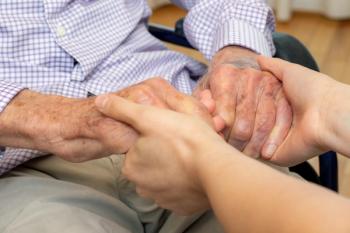
Tooth-Mounted Sensor Offers New Method to Track Diet
Scientists have developed a tiny sensor that can track certain chemicals and nutrients. But the potential uses of the sensor extend beyond diet.
Tracking a patient’s dietary intake could soon be as simple sticking a tiny sensor on a tooth.
Scientists at Tufts University have developed a tooth-mounted sensor that can automatically track a person’s glucose, salt, and alcohol intake as they are consumed, according to
The innovation marks a new—and potentially more accurate—way to track patient diets in an age when the general public is becoming increasingly comfortable with the use of devices like fitness watches to track personal health data.
>>
The sensor measures just 2 millimeters by 2 millimeters, but it’s capable of both identifying nutrients and sending intake information wirelessly to a device, such as a smartphone.
The sensor is comprised of 3 layers: a bioresponsive layer that identifies the nutrients or chemicals, along with 2 gold squares, which act like an antenna to collect and transmit radiofrequency waves, according to Tufts. The sensors absorb radiofrequency waves, cancel out part of the waves, and then transmit the remainder. The sensor is designed so that the cancellation corresponds to a specific nutrient or chemical. Thus, when the sensor detects glucose, it transmits a particular spectrum of radiofrequency waves; when it detects alcohol, it transmits a different spectrum.
Fiorenzo Omenetto, PhD, a professor of engineering at Tufts, said the sensor isn’t necessarily limited to glucose, alcohol, and salt.
“In theory, we can modify the bioresponsive layer in these sensors to target other chemicals—we are really limited only by our creativity,” said Omenetto, the corresponding author of a study about the sensor. “We have extended common RFID [radiofrequency ID] technology to a sensor package that can dynamically read and transmit information on its environment, whether it is affixed to a tooth, to skin, or any other surface.”
The technology isn’t the first wearable to monitor dietary habits. However, previously technologies involved mouth guards, wires, or frequent sensor replacements.
Tufts spokesman Mike Silver told Healthcare Analytics News™ that the sensor could have a wide variety of applications, including in nutritional and environmental studies (where it could measure toxins, for instance). But he noted that the sensor doesn’t have the ability to detect the amounts ingested, as it can only identify what is being ingested. He said there are other limitations, too.
“In the future, the middle detection layer could be modified to collect information on a very large range of chemicals, but it would not be possible to, for example, break down the entire list of chemicals found in a bite of food,” he said.
And while the initial prototype involves using the sensor on a tooth, Silver said the technology is much more versatile.
“Imagine if it were used in automobiles or heating furnaces to automatically shut them down if high levels of carbon monoxide are detected,” he said. “The small size, wireless technology, and potential versatility in detection means there are applications out there that we have not even imagined yet.”
The study is titled, “Functional, RF‐Trilayer Sensors for Tooth‐Mounted, Wireless Monitoring of the Oral Cavity and Food Consumption.” It was published last month in
Get the best insights in healthcare analytics
Related








































